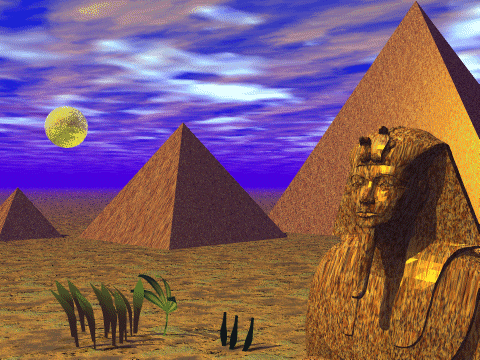|
|
|


|
Each symbol could be repeated up to nine times,
signifying addition. In a system
of this kind
the order of the symbols is of no consequence, but the Egyptians usually
wrote the symbols in order of descending value, either from left to
right or from right to left.
|
| A number system
that uses ten as a base is called a decimal (decadic, denary) system;
thus the notation used by the ancient Egyptians is a strictly additive
decimal notation. The Egyptians generally used only so-called unit
fractions having the number 1 as numerator, which they wrote by placing
the symbol for an open mouth above the denominator:
1/13 1/224 1/2160 |
Special symbols were used for certain fractions:![]()
If you want to know more about ancient Egyptians click here !
![]()
